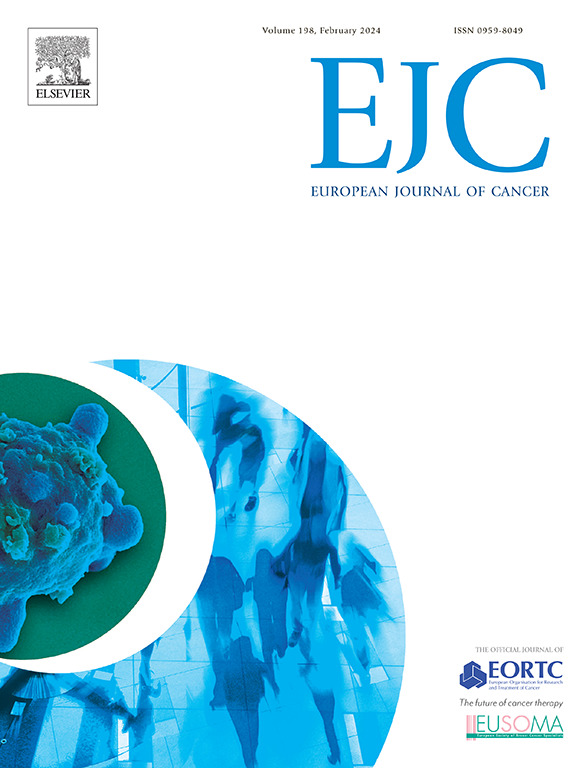Somatic BRCA1/2 mutations are associated with a similar survival advantage to their germline counterparts in tubo-ovarian high grade serous carcinoma
IF 7.6
1区 医学
Q1 ONCOLOGY
引用次数: 0
Abstract
Background
Half of high grade serous tubo-ovarian carcinomas (HGSOC) demonstrate homologous recombination repair (HRR) deficiency, most commonly through germline or somatic pathogenic variants in BRCA1/2 (gBRCA1/2 or sBRCA1/2). gBRCA1/2 is associated with favourable survival, greater response rate to platinum-based chemotherapy, and marked sensitivity to poly(ADP-ribose) polymerase (PARP) inhibitors. sBRCA1/2 has been assumed to confer a similar clinical phenotype; however, few studies have specifically investigated sBRCA1/2 versus gBRCA1/2 to demonstrate their equivalence.
Methods
We investigated the association of gBRCA1/2, sBRCA1/2 and non-BRCA HRR gene mutations with HGSOC patient survival using two patient cohorts (cohort 1, n = 174 matched FFPE tumour and normal with panel-based sequencing; cohort 2, n = 279 matched fresh tumour and normal with whole genome sequencing). TCGA-OV samples (n = 316) were used for external validation.
Results
Patients with HRR-mutant tumours (BRCA1, BRCA2, non-BRCA HRR-mutant) demonstrated prolonged survival across both cohorts (cohort 1: multivariable hazard ratio [multiHR] 0.53 [0.32–0.87]; cohort 2: multiHR 0.36 [0.25–0.51]). gBRCA1/2 and sBRCA1/2 were associated with a similar survival benefit compared to the HRR-wildtype group in the combined cohort (cohort 1 +2) (gBRCA1/2: multiHR 0.50 [0.34–0.71]; sBRCA1/2: multiHR 0.41 [0.25–0.68]). These findings were recapitulated using the TCGA-OV dataset (gBRCA1/2: multiHR 0.56 [0.34–0.91]; sBRCA1/2: multiHR 0.48 [0.25–0.92]). Non-BRCA HRR mutations were associated with marked survival advantage (multiHR vs HRR-wildtype 0.22 [0.11–0.45]). The survival advantage in BRCA1-mutant cases (germline or somatic) was less marked (multiHR for non-BRCA HRR-mutant vs BRCA1-mutant 0.41 [0.19–0.90]). gBRCA1/2, sBRCA1/2 and non-BRCA HRR mutations were all associated with high HRDetect scores measuring HRR deficiency (median 1.00 versus 0.56 in HRR-wildtype, P < 0.01).
Conclusion
gBRCA1/2 and sBRCA1/2 are equivalent in their association with prolonged survival. Non-BRCA HRR gene mutations may be associated with markedly favourable survival in HGSOC.
求助全文
约1分钟内获得全文
求助全文
来源期刊

European Journal of Cancer
医学-肿瘤学
CiteScore
11.50
自引率
4.80%
发文量
953
审稿时长
23 days
期刊介绍:
The European Journal of Cancer (EJC) serves as a comprehensive platform integrating preclinical, digital, translational, and clinical research across the spectrum of cancer. From epidemiology, carcinogenesis, and biology to groundbreaking innovations in cancer treatment and patient care, the journal covers a wide array of topics. We publish original research, reviews, previews, editorial comments, and correspondence, fostering dialogue and advancement in the fight against cancer. Join us in our mission to drive progress and improve outcomes in cancer research and patient care.
 求助内容:
求助内容: 应助结果提醒方式:
应助结果提醒方式:


